Introduction of the Event
Purpose of DGIST boat tour
쌍계서원터에 자리잡은 DGIST와 도동서원을 잇는 보트 투어를 DGIST를 방문하는 국제적인 석학 및 귀빈을 대상으로 실시한다. 초일류 명문대학 DGIST의 자랑인 수려한 경관을 한눈에 조망할 수 있는 투어는 DGIST 방문자들이 피로를 회복할 수 있도록 하고 잊을 수 없는 추억을 선사한다.
DGIST boat tour is performed from Ssanggye Confucian Academy site to Dodong Confucian Academy for international scholars who visit DGIST. This tour, which offers the gorgeous view of DGIST, offers unforgettable memory to visitors and helps them to lifts their spirits.
Composition of Program
Tour course
Academy DGIST Boat Club’s Dock Ssanggye Confucian
Academy site
Tour contents
- Biseul-mountain(비슬산)
- Biseul-mountain is the tallest and most western mountain of the Biseul-jimaek ridge, which stretches from the Nakdong ridge west of Gyeongju and ends where it meets the Nakdongriver, south of Miryang in Gyeongsangnam-do.
At 1083m its main peak Daegyeon-bong stands high above surrounding mountains, allowing for good views in all directions - notably west over the Nakdong River, north into Daegu citys' southern suburbs and east over the sea of green ridge stretching toward Gyeongju.
Biseul-san's broad, gently sloping high ridge is free of large forest and supports a very large colony of Royal Azaleas, which bloom brilliant pink from late spring through to mid summer and attract large numbers of hikers annually.
Yuga-sa (above) is located in a deep, granite-strewn gorge below Daegyeon-bong on the western side of the mountain. Interestingly the rocks of the river and gorge are considered a slow moving stream - like a stone glacier - and are given historical property status by the government.
Yuga-sa is the main temple of the Yuga sect of Buddhism, founded by Doseong-guksa approx.829A.D, during the reign of King Heungdeok of the Silla Dynasty. Amongst its treasures is a fine, Buddha statue (tangible cultural property no.50 - pictured right) seated in its own shrine.
Yuga-sa is a charming spot set amongst trees alongside the rocky stream, it is currently undergoing some major landscaping in its grounds with dozens of huge cairns being erected and a park-like entrance area being built alongside the river and trail entrance.
- Nakdong River
- The Nakdong River has played an important role throughout Korean history. The river basin has been a favored dwelling-place for as long as people have inhabited the Korean peninsula. Numerous Neolithic remains have been found in the valley.
Around the 1st century, the valley is believed to have been inhabited by the Byeonhan confederacy tribes. During the Three Kingdoms period, the Gaya confederacy controlled the valley, until they were overrun by Silla in 562. These states exploited the river's potential for navigation and commerce, operating a thriving trade in armor and weapons with neighboring countries, including Yamato period Japan. Through the Silla, Goryeo, and Joseon periods, the river continued to serve as a major transportation corridor in the Gyeongsang region. It was especially used for transporting fresh seafood inland, such as mackerel, which were salted and dried in order to prevent them from spoiling. The city of Andong was the farthest inland the fish could be brought before going bad, so many people flocked there during the Joseon Dynasty to eat fish.
As a barrier to movement, the Nakdong River gained sudden prominence during the Korean War. The southern length of the river formed the western portion of the Pusan Perimeter, which the UN forces fought to maintain during the autumn of 1950. The bridge over the Nakdong River at Waegwan was blown up on August 3, 1950 in an effort to prevent North Korean forces from advancing on Daegu. A large number of Korean refugees were killed in the explosion. Although some North Korean forces did cross the Nakdong River in places, for the most part the river still marks their furthest advance.
- Dodong Confucian Academy
-
- Classification : Treasure No. 350
- Designated Date : Jan. 21, 1963
- Location : 35 Dodong-ri, Guji-myeon, Dalseong-gun
- Era : 40th year of King Seonjo (1607)
- Area : 5,400m2
This place, one of Korea’s 5 major seowon (Confucian halls), was where the fathers of moral philosophy Han Hwondang and Kim Gwuingpil were canonized. Its beautiful walls were the first in Korea to be designated as a national treasure, while the scenery of the 400 year old gingko trees and Nakdongriver flowing calmly beside the seowon brings to mind the traditionally scholarly way and old oriental paintings.
Seowon was a local private organization that held memorial services for great scholars and studied Confucianism in the Joseon era.
Dodong Seowon was established in 1568 in order to commemorate the scholarship and virtue of Kim Gwoingpil, one of the great scholars. However, it was burnt down during the Japanese Invasion of 1592 and a shrine was rebuilt on the same site in 1604.
This shows the traditional structure of seowon built in a simple and frugal way in the mid Joseon Dynasty. King Seonjo bestowed a tablet of the seowon written that the King himself wrote in 1607.
Dodong Seowon is well known for its beautiful scenery in the Dalseong-gun District, with a 400-year-old gingko tree standing in the yard.
- Gwak Jae-u
Japanese invasion
(The Imjin war)
Battle field - General Gwak Jae-u (1552–1617) was a Korean military general and patriot from Uiryeong. In 1592, nine days into the Imjin war, he formed a militia to fight against the Japanese army. He was originally a commoner, but King Seonjo of Joseon granted him a government position. Gwak Jae-u disrupted Japanese supply lines around the Nakdong River in many guerrilla actions.
- Gongsin-jeong(공신정)
- The YeongwolEom Clan. A vice minister Eom san-su(엄산수) was involved in disposal of a queen during the reign of King Seongjong (1457~1494) in the Joseon Dynasty.
The Eom family was banished here by the disposed queen’s son Yeonsangun(연산군) and they made deep bow to north to show their loyalty. However the King ordered poison on them as a death penalty.400 years ago their descendant found Gongsin-jeong(공신정) on that place.
Photo of past tour
- Aug. 9. 2013
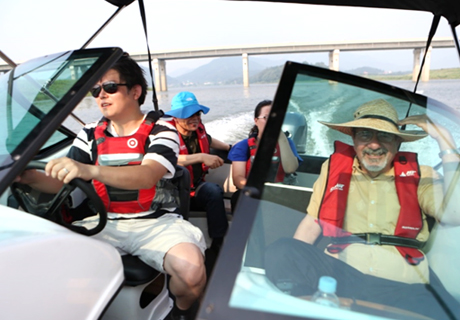
- Prof. Richard Zare(Chemistry, Stanford University)
- Prof. Hong Gil Nam(New Biology, DGIST, National Scholar)
- Sep. 4. 2013

- Prof. Klaus von Klitzing(Max Plank Institute, 1985 Nobel Laureate in Physics)
- Prof. Govindjee&RajniGovindjee(Plant Biology, UIUC)
- Sep. 12. 2014
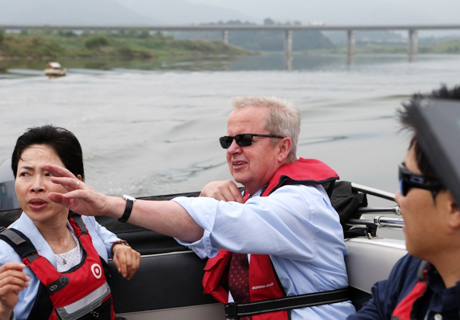
- Prof. Jens K. Norskov(Chemical Engineering, Stanford University)
- Sep. 14. 2014
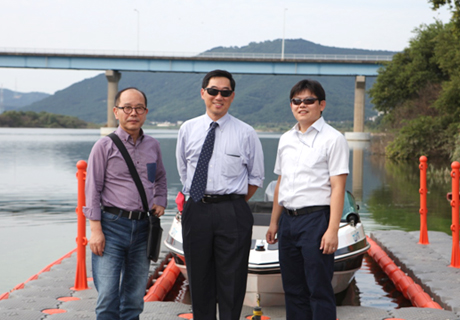
- Prof. Seung Kook Kim(Developmental Biology and Medicine, Stanford University)
- Prof. Hong Gil Nam(New Biology, DGIST, National Scholar)
- Oct. 14. 2014
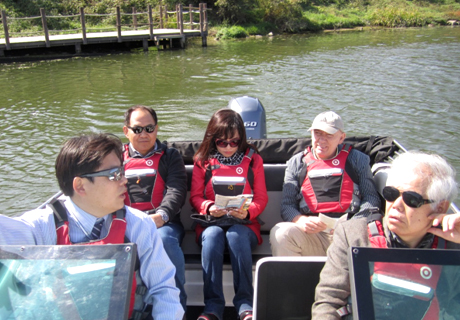
- Prof. SeungJan Vijg(Albert Einstein College of Medicine)
- Prof. YousinSuh(Albert Einstein College of Medicine)
- Prof. Yoshio Tateno(National Institute of Genetics)
- Oct. 20. 2014
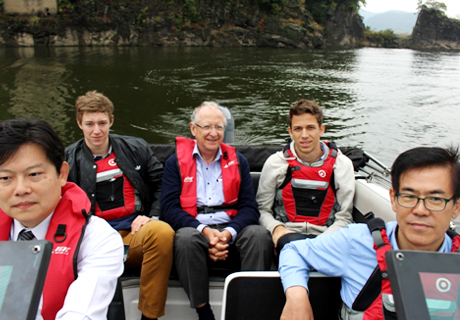
- Jörg Al. Reding(Ambassador of Switzerland)
- Prof. Dong-Pyo Kim(Chemical Engineering, POSTECH)
- Oct. 24. 2014
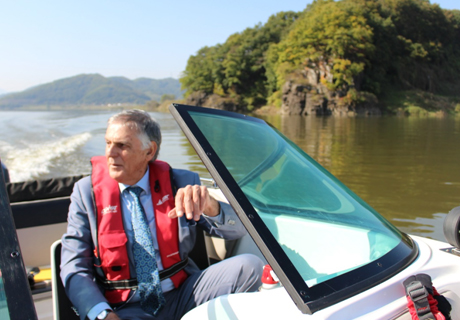
- Prof. Dan Shechtman(Technion-Israel Institute of Technology, 2011 Nobel Laureate in Chemistry)
- Oct. 24. 2014
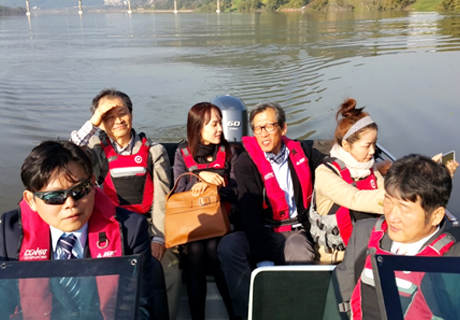
- 유홍준교수
- 김남두교수
- Apr. 25. 2015
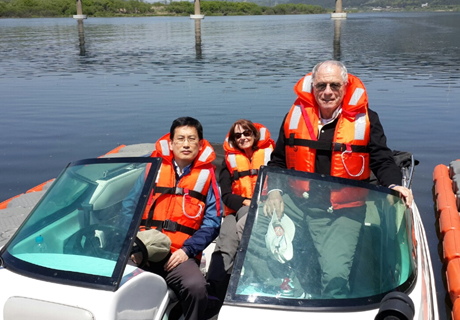
- Prof. Kurt Wȕthrich(ETH Zȕrich Scripps Institute, Switzerland, 2002 Nobel Laureate in Chemistry)
- Prof. Iksoo Chang(Brain Science, DGIST)
- July. 17. 2015
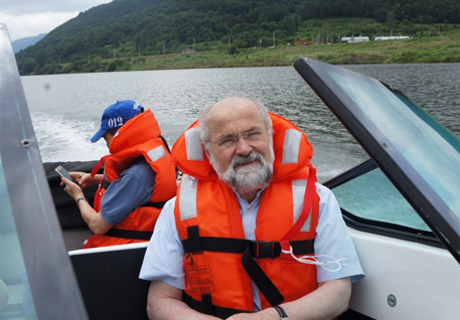
- Prof. ErwinNeher(Max Plank Institute for Biophysical Chemistry, Gőttingen, Germany, 1991 Nobel Laureate in Physiology or Medicine)
- Prof. Kyungjin Kim& Prof. Yong-Seok Oh(Brain & Cognitive Science, DGIST)
